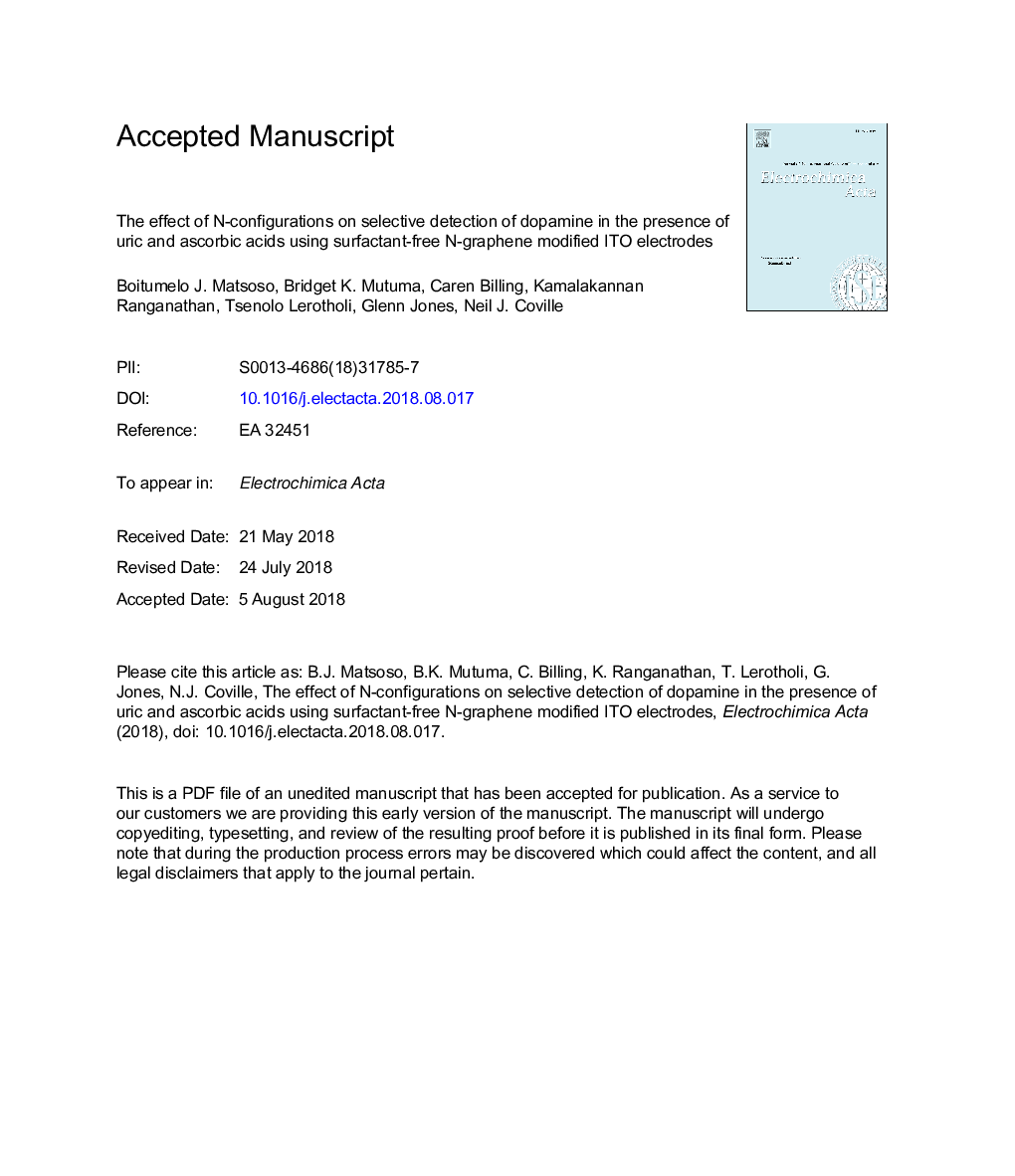| Article ID | Journal | Published Year | Pages | File Type |
|---|---|---|---|---|
| 6601724 | Electrochimica Acta | 2018 | 25 Pages |
Abstract
Nitrogen doped graphene based electrodes are increasingly gaining attention for application in voltammetric detection of dopamine (DA). However, little attention has been paid on the influence of the relative concentration of N-configurations on the electrocatalytic performance of these electrodes. Therefore in this study, sensitive and selective surfactant-free indium tin oxide (ITO) electrodes, modified with N-graphene films of varying nitrogen configurations, were employed for detection of DA in the presence of uric (UA) and ascorbic acids (AA). The N-graphene films, initially characterized using XPS, consisted of 38-60% pyridinic-N, 4-31% pyrrolic-N, 13-56% graphitic-N, and 2-9% oxidized pyridinic-N (NOx). The results showed that the NGr/ITO electrodes exhibited excellent selective electrocatalytic performance for the oxidation of DA in the presence of UA and AA. As a result, the detection limits (S/Nâ¯=â¯3) of DA were determined to be 0.131â¯Â±â¯0.005â¯Î¼M, 0.153â¯Â±â¯0.03â¯Î¼M, and 0.645â¯Â±â¯0.07â¯Î¼Mâ¯at the NGr-2/ITO, NGr-10/ITO and NGr-20/ITO electrodes, respectively. The excellent electrocatalytic activity of NGr-2/ITO electrode towards the oxidation of DA was ascribed mainly to an improved Ï-Ï interaction of the NOx (9.2%) and pyrrolic N-configurations (59.6%) with the hydroxyl and amine groups on DA. Generally, this study has provided a procedure for designing new surfactant-free 2D N-graphene based electrochemical sensors with specific electrocatalytic performance.
Related Topics
Physical Sciences and Engineering
Chemical Engineering
Chemical Engineering (General)
Authors
Boitumelo J. Matsoso, Bridget K. Mutuma, Caren Billing, Kamalakannan Ranganathan, Tsenolo Lerotholi, Glenn Jones, Neil J. Coville,
